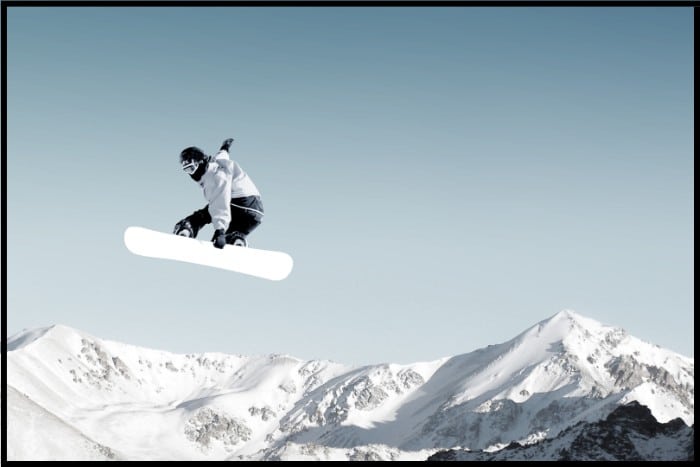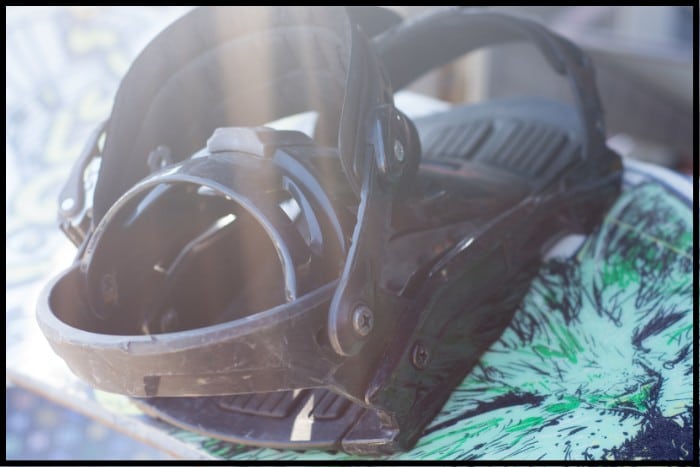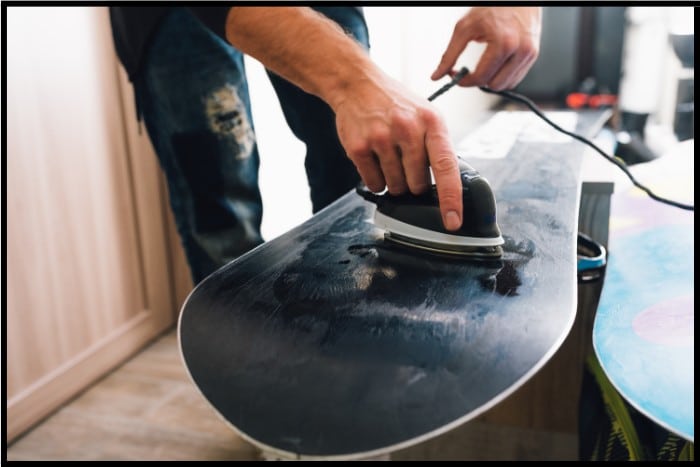Whether you’re working out if you can justify buying a brand new snowboard or wondering how much more life your current one has left in it, it’s not unreasonable to wonder if snowboards expire. They do, although it’s difficult to give a set timeframe because of how many things can impact the lifespan of a snowboard.
On average, a snowboard is at its best up to around 90 days of riding and towards the end of its lifespan after 150-200 days of riding. However, the true expiration date on a snowboard can vary greatly depending on its quality, how and where it’s used, and how well it’s taken care of by its owner.
Today, we’re not just going to look at how long a snowboard is supposed to last, but we’re also going to cover the main signs that it’s time to look for a replacement and the best ways to extend your snowboard’s life.
How Long Do Snowboards Last?
The general consensus is that a snowboard is at its best between 75 to 90 days of riding and will almost certainly be at the end of its life span between 150 and 200 days of use.
However, this doesn’t mean you need to count the days you’ve used your snowboard and start shopping for a new one as you hit these limits.
Ask any long-term snowboarder, and they’ll tell you about boards they’ve had that have given up the ghost after just a few months, as well as those that have lasted two full winter seasons of intense riding and still have some life left in them.
In reality, how long your snowboard lasts can depend on several factors; the board’s construction and materials, how hard you ride it, the conditions you ride it in, your style of riding, and even sheer luck.
With that in mind, the best way to determine whether your snowboard is nearing its expiry date is to know the key signs of excessive wear and tear.

5 Signs It Might Be Time To Replace Your Snowboard
Knowing the signs of a deteriorating snowboard before it fails is crucial to prevent serious injuries while riding. Fortunately, it’s easy to spot the common signs indicating the need for a new board.
Let’s take a look at 5 of the most common signs that it’s time to start shopping around for new equipment.
1. It’s Gone Flat
All snowboards are built with a specific “profile,” that is, the way the board bends when it’s laid flat on the ground and viewed side-on.
The profile generally dictates the overall behavior of the snowboard, such as whether it’s more stable or floaty, forgiving or responsive, playful or aggressive.
Traditionally, snowboards featured a camber profile that raised the board off the ground between the rider’s feet.
However, these days, manufacturers experiment with various profiles and hybrid constructions. As a rider, you’ll become familiar with the feel of your board’s profile.
If you notice it is feeling flat and lying flush on the ground when it shouldn’t, it’s a sign to start shopping for a new one. However, if your board has an intentionally flat profile, you’ll need to assess it differently.
2. No More Pop
When we talk about a snowboard’s “pop,” we’re talking about how much energy the board stores and uses when it rebounds and returns to its original shape when it’s flexed.
It’s a slightly difficult concept to explain if you haven’t experienced it, but every rider becomes familiar with the sensation after some time on the slopes.
The amount of pop a snowboard has usually depends on a few key factors; the profile of the board, its construction, and the materials used.
For example, the types of wood a manufacturer uses can determine the level of pop. They may add carbon fiber, aluminum, or Kevlar layers to the base.
Over time, your board’s pop will decrease, making it feel “flat,” as mentioned above. You’ll notice the drop in your board’s performance, and unfortunately, once pop is gone, it ain’t coming back.
Time to start snowboard shopping.
3. Bindings Won’t Stay Tight
It’s not unusual for your bindings to need tightening occasionally. While you’re riding, your snowboard deals with intense vibrations, which can cause the bolts that secure your bindings to loosen up.
It’s best practice to check each time you ride, but it should be fairly uncommon that your bindings come loose enough that there’s a noticeable wiggle.
However, if you notice that your bindings are coming loose more and more frequently, it’s likely a sign that the screws or threads are being stripped.
If it’s just the screws that are stripped, you shouldn’t have an issue sourcing replacements. If the threads are stripped, you’re looking at a much trickier fix.
It’s not an easy self-repair job, and a professional fix can be expensive, so at this point, most snowboarders accept their fate and move on.

4. Edges Are Too Dull
A snowboard’s edges have to be sharp to give us control over our board when we turn – without control, we’re putting ourselves at risk of sliding out and potentially injuring ourselves or others.
In case you’re wondering if there’s something known as “too sharp edges”, do read my article on how sharp can your snowboard edges be?
It’s normal for edges to gradually dull over time, which isn’t usually a problem.
While it depends on how often you ride and the conditions you usually ride, it’s normally enough to sharpen your edges once a season with an edge tuner.
You can also use a diamond stone from time to time to remove any burrs and imperfections that show up.
Unfortunately, at some point, you might find the edges just won’t stay sharp anymore, or there’s not enough edge left to sharpen.
As you’ve probably guessed, this is another sign it’s time to retire that snowboard.
5. It’s Taken Too Much Of A Beating
Your snowboard is always going to pick up some dents and dings over its life. Most of these will be cosmetic and shouldn’t affect your riding experience at all.
Some damage could be classed as more serious if it’s not addressed. For example, a core shot – a gouge in the base that reaches the snowboard’s core – exposes the inside of the board to moisture which can lead to rot.
Although not all core shots are fixable, the ones that can be repaired should be addressed immediately if you want to save your snowboard.
It’s also possible to damage your snowboard’s edges past the point of repair, especially if the edge comes away from the base.
Again, you might be able to DIY or find a skilled professional who can do the work, but it’ll depend on the severity of the damage.
There are also some things a snowboard will never come back from, like a cracked base or a complete snap.
Top Tips For Extending The Life Of Your Snowboard
Accidents aside, the best way to extend your snowboard’s life is to take great care of it. Here are a few of the best ways to make your equipment last.
1. Wash It Regularly
Whenever you finish a ride, give it a quick wipe down to dry it off – this will help reduce the chance of moisture getting into any unnoticed cracks.
If your board gets dirty, use a mild detergent and warm water to wash it.
2. Proper Waxing
Using a good quality snowboard wax and the correct waxing method (none of this instant rub-on wax stuff) is imperative for board performance and protection.
Once every 4 or 5 rides, or when you start to feel the base of your board dragging and losing speed, is enough.

3. Tune Your Edges
As mentioned above, tune your edges once a season and keep an eye on them if you’re riding regularly. A diamond stone is an easy way to keep them sharp and remove imperfections as and when they appear.
4. Store It Safely
Making sure your snowboard is being taken care of when you’re not using it is just as important as how you treat it on the mountain.
If the board is going away for a while, apply a good layer of wax to the entire base to prevent it from drying out, and make sure you store it in a cool, dry place until it’s time to play again.
Conclusion
In summary, snowboards can definitely expire and lose some of the key properties that make them fun or safe to ride.
While you can expect a well-made board to last up to 200 sessions, this depends entirely on how well you look after the board and how hard you ride it.
By taking good care of your equipment and repairing minor damage in a timely fashion, you should be able to keep riding the same board for a reasonably long time.
